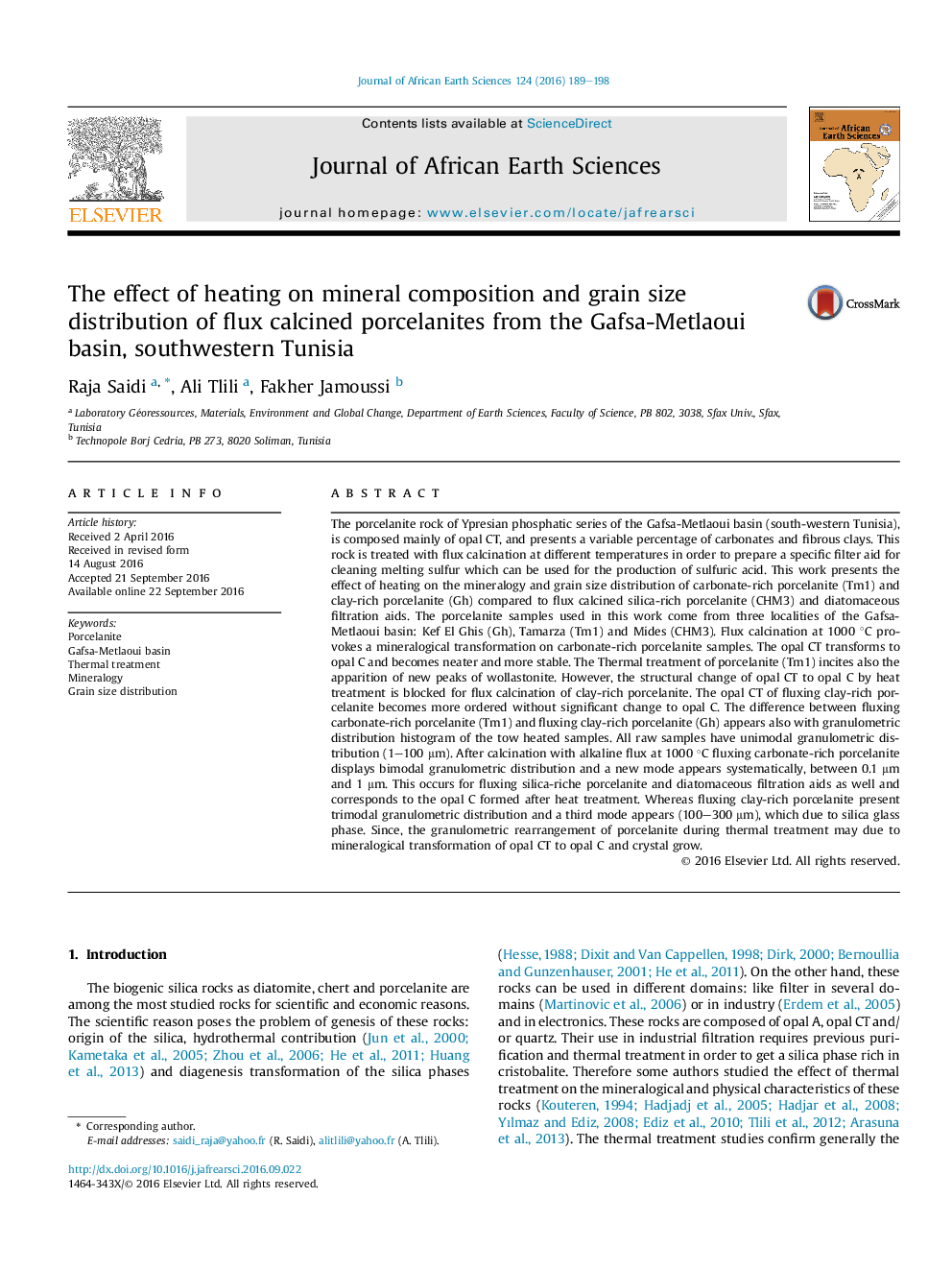| کد مقاله | کد نشریه | سال انتشار | مقاله انگلیسی | نسخه تمام متن |
|---|---|---|---|---|
| 4728141 | 1640184 | 2016 | 10 صفحه PDF | دانلود رایگان |
• Porcelanite is heated with flux to prepare a specific filter aid for cleaning melting sulfur.
• Mineralogy & granulometry of fluxing carbonate-rich and clay-rich porcelanites is different.
• Opal CT transforms to opal C and becomes neater and more stable fluxing carbonate-rich porcelanite.
• Transformation of opal CT to opal C by heat treatment is blocked with flux clay-rich porcelanite.
• Granulometry of fluxing carbonate-rich is bimodal & for clay-rich porcelanites is trimodal.
The porcelanite rock of Ypresian phosphatic series of the Gafsa-Metlaoui basin (south-western Tunisia), is composed mainly of opal CT, and presents a variable percentage of carbonates and fibrous clays. This rock is treated with flux calcination at different temperatures in order to prepare a specific filter aid for cleaning melting sulfur which can be used for the production of sulfuric acid. This work presents the effect of heating on the mineralogy and grain size distribution of carbonate-rich porcelanite (Tm1) and clay-rich porcelanite (Gh) compared to flux calcined silica-rich porcelanite (CHM3) and diatomaceous filtration aids. The porcelanite samples used in this work come from three localities of the Gafsa-Metlaoui basin: Kef El Ghis (Gh), Tamarza (Tm1) and Mides (CHM3). Flux calcination at 1000 °C provokes a mineralogical transformation on carbonate-rich porcelanite samples. The opal CT transforms to opal C and becomes neater and more stable. The Thermal treatment of porcelanite (Tm1) incites also the apparition of new peaks of wollastonite. However, the structural change of opal CT to opal C by heat treatment is blocked for flux calcination of clay-rich porcelanite. The opal CT of fluxing clay-rich porcelanite becomes more ordered without significant change to opal C. The difference between fluxing carbonate-rich porcelanite (Tm1) and fluxing clay-rich porcelanite (Gh) appears also with granulometric distribution histogram of the tow heated samples. All raw samples have unimodal granulometric distribution (1–100 μm). After calcination with alkaline flux at 1000 °C fluxing carbonate-rich porcelanite displays bimodal granulometric distribution and a new mode appears systematically, between 0.1 μm and 1 μm. This occurs for fluxing silica-riche porcelanite and diatomaceous filtration aids as well and corresponds to the opal C formed after heat treatment. Whereas fluxing clay-rich porcelanite present trimodal granulometric distribution and a third mode appears (100–300 μm), which due to silica glass phase. Since, the granulometric rearrangement of porcelanite during thermal treatment may due to mineralogical transformation of opal CT to opal C and crystal grow.
Journal: Journal of African Earth Sciences - Volume 124, December 2016, Pages 189–198
